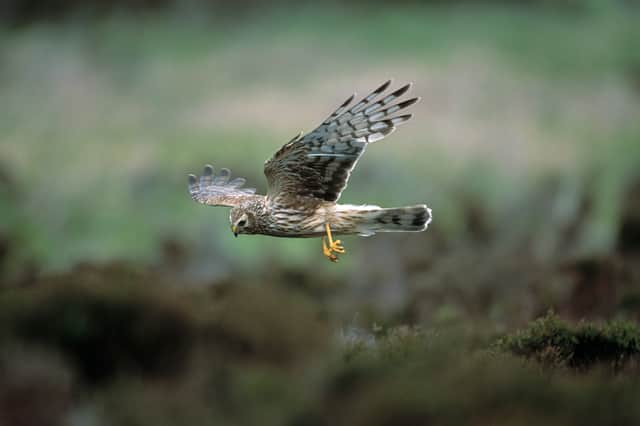RSPB hen harrier survey: Illegal killings still cast shadow over future of one of UK's rarest birds of prey
This article contains affiliate links. We may earn a small commission on items purchased through this article, but that does not affect our editorial judgement.


New data suggests one of the UK’s rarest birds of prey may be starting to overcome its long-term population decline, but illegal killings still mar what should be a bright future for the species.
The Royal Society for the Protection of Birds (RSPB) released the results of its 2023 hen harrier survey on Monday (8 April), which show how different populations of the threatened bird of prey are faring across Britain, Northern Ireland, and the Isle of Man. But the conservation charity says the results have shown a mixed picture, with some populations doing better than previous years, while others are worse off.
Advertisement
Hide AdAdvertisement
Hide AdHen harriers, so named for their preferred prey of wildfowl, can be found across much of Europe and Asia. Unfortunately in the UK the species is on the conservation red list, and the RSPB reports it is one of the most persecuted birds of prey in the country - despite being protected under the Wildlife and Countryside Act.
The new survey showed promising signs that the threatened raptor’s fortunes were changing. A total of 691 pairs were recorded across the UK and Isle of Man - 653 of them in the UK. This represented a 20% rise on the 545 pairs recorded in the last survey in 2016, and also hinted that a downwards trend in numbers since the 2004 survey - when 749 pairs were recorded - had started to turn around.
But unfortunately, the hen harrier’s burgeoning success story was not the same everywhere, with the survey showing huge variation among populations across the UK. England saw the biggest increase, with Natural England data showing 54 breeding attempts by 50 pairs last year - a whopping 1,150% increase from just four pairs recorded in 2016.
But the species was still missing altogether form huge areas of ideal habitat across large parts of England, including the Peak District and North York Moors. RSPB global conservation director Katie-Jo Luxton said this showed that there was still much more work to be done.
Advertisement
Hide AdAdvertisement
Hide Ad“England has seen the biggest increase, which is welcome news, but the starting point was shockingly low, and well below where we would expect healthy populations of these birds to be given the habitat available to them,” she said. “The work we and others have been doing to restore these populations is incredibly important, and we need to make sure it continues and that we step up our efforts to tackle the illegal killing of birds of prey.”
RSPB senior conservation scientist Simon Wotton said despite the welcome boost, “the overall population is still well below where it should be”. Raptor persecution - the illegal killing or harming of birds of prey, remained a big part of that, he said, and there needed to be more legal protection if the species is ever to thrive in British skies once again.
“The reasons for hen harriers continuing to be far below their potential population are complex, but one of the primary causes is that continuing illegal killing, typically associated with intensive grouse moor management, is stifling their full recovery,” he said. Combined Natural England and RSPB data showed that 32 satellite-tagged hen harriers vanished or were confirmed as being illegally killed in England in 2023 - the highest recorded number to have suspiciously disappeared in a single year.
The RSPB’s ‘Birdcrime’ report, published in November, found they were not the only birds of prey suffering. Hawks, harriers, eagles and falcons had all been recorded dying in horrific ways, disproportionately linked to land used for gamebird shooting.
Advertisement
Hide AdAdvertisement
Hide AdBut Mr Wotton said new legislation offered hope. The Scottish Government recently passed the Wildlife Management and Muirburn (Scotland) Bill. which will introduce licencing for grouse shooting in Scotland, alongside measures to protect hen harrier habitats.
“With the UK population at around a quarter of its estimated potential, there so much more to do to secure a meaningful recovery,” he said. “The recent Wildlife Management and Muirburn Bill includes specific monitoring and reporting of hen harrier populations on grouse moors in Scotland to the Scottish Parliament and will be an important step in assessing progress with their recovery in these areas.”
The RSPB hoped that it may eventually lead to similar legislation in England, which - alongside landscape restoration work in Wales and Northern Ireland - could lead to a brighter future for hen harriers in the UK.
